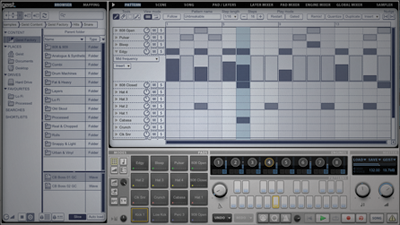


When you put together a sub boom, a low-mid range thump and a mid-high frequency thwack or tick, you get a typical basic kick drum sound, for example. Layering is essentially about arranging several separate sounds together, in such a way that when played back together the overall effect is of a single complete sound.Įach layer will ideally occupy its own range of frequencies, and contribute some sonic characteristics that are not present in the other layers: for example, layering a hard digital hit sound with an abrupt, punchy transient with a softer but pleasingly acoustic-sounding mid-range thump can give you a percussion hit sample with the best of both worlds: evocative character and impressive weight.Īs we touched on in the previous article on distortion in sound design, it’s helpful for any producer, but particularly those designing their own sounds, to develop the habit of hearing drums and synth sounds as made up of several discreet parts, each occupying their own frequency range and with their own envelope characteristics (or put in simple terms, each with their own shape and timing). But what exactly do we mean by “layering”, and why is it an effective technique?

It’s quite a simple concept in principle, but as with many aspects of music production and sound design, it can help to approach it in the right way with some key knowledge, and with the right tools that will make your life easier and more creative when working with layers. Continuing our Sound Design series, in Part 3 we are digging into the concept of layering pieces of audio together to create richer, more detailed and more impactful sounds.


 0 kommentar(er)
0 kommentar(er)
